I'll never forget the first time I tasted this creamy, comforting dessert at my Tita Delie's house in Laguna. I was helping her in the kitchen when she casually started cooking what looked like the simplest ingredients: just mung beans, coconut milk, and sugar.
Twenty minutes later, I was completely hooked on this humble yet incredibly satisfying treat. She taught me that the secret isn't in fancy ingredients, but in patience and getting that perfect balance of creamy coconut richness with tender, sweet mung beans. Now it's become my go-to dessert!
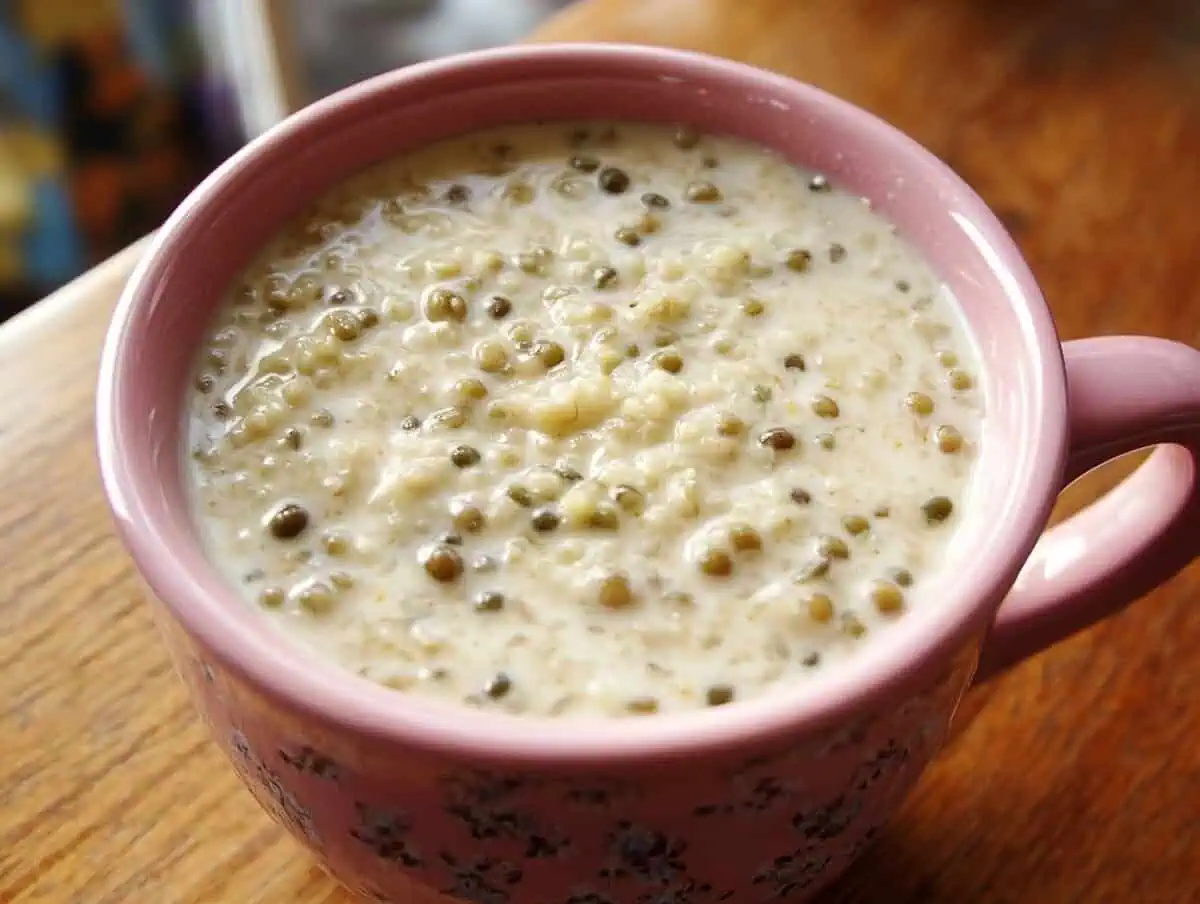
Why You'll Love This Recipe
This traditional Filipino dessert brings pure comfort in every spoonful. The creamy coconut milk perfectly balances the earthy sweetness of tender mung beans, creating a dessert that's both satisfying and nostalgic. It's incredibly easy to make with just a few pantry staples, making it perfect for beginners or busy weeknights when you crave something sweet and homemade.
The natural protein from mung beans makes this dessert surprisingly nutritious, while the customizable sweetness level means everyone in the family will love it.
Jump to:
Ingredients
- 1 cup mung beans
- 2 cups water
- 1 cup coconut milk
- 3-4 tablespoons granulated sugar (adjust to taste)
- 2-3 tablespoons sweetened condensed milk (optional)
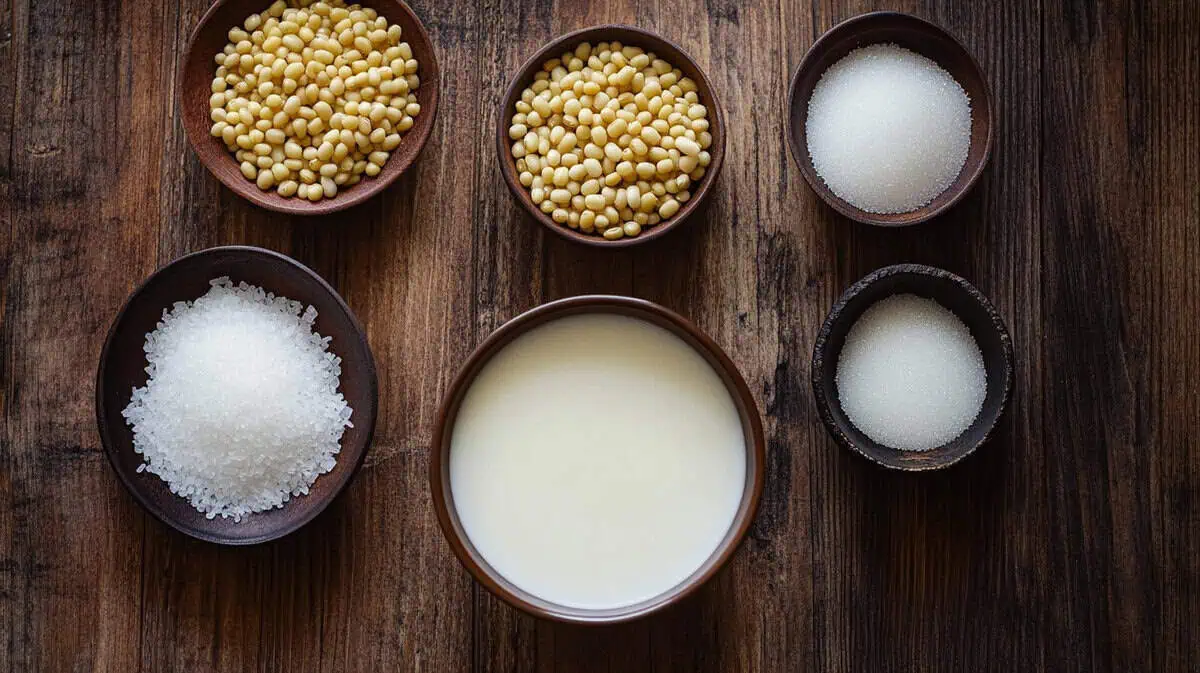
These simple ingredients work together beautifully to create the perfect dessert. Mung beans provide the hearty base with their naturally nutty flavor and creamy texture when cooked. Coconut milk adds richness and that signature Filipino taste we all love, while the sugar and condensed milk create the perfect level of sweetness that makes this dessert so comforting.
Equipment
- Medium saucepan - For cooking the mung beans evenly and preventing scorching
- Wooden spoon - For gentle stirring that won't break the tender beans
- Fine mesh strainer - For rinsing the mung beans before cooking
- Serving bowls - For presenting your beautiful dessert
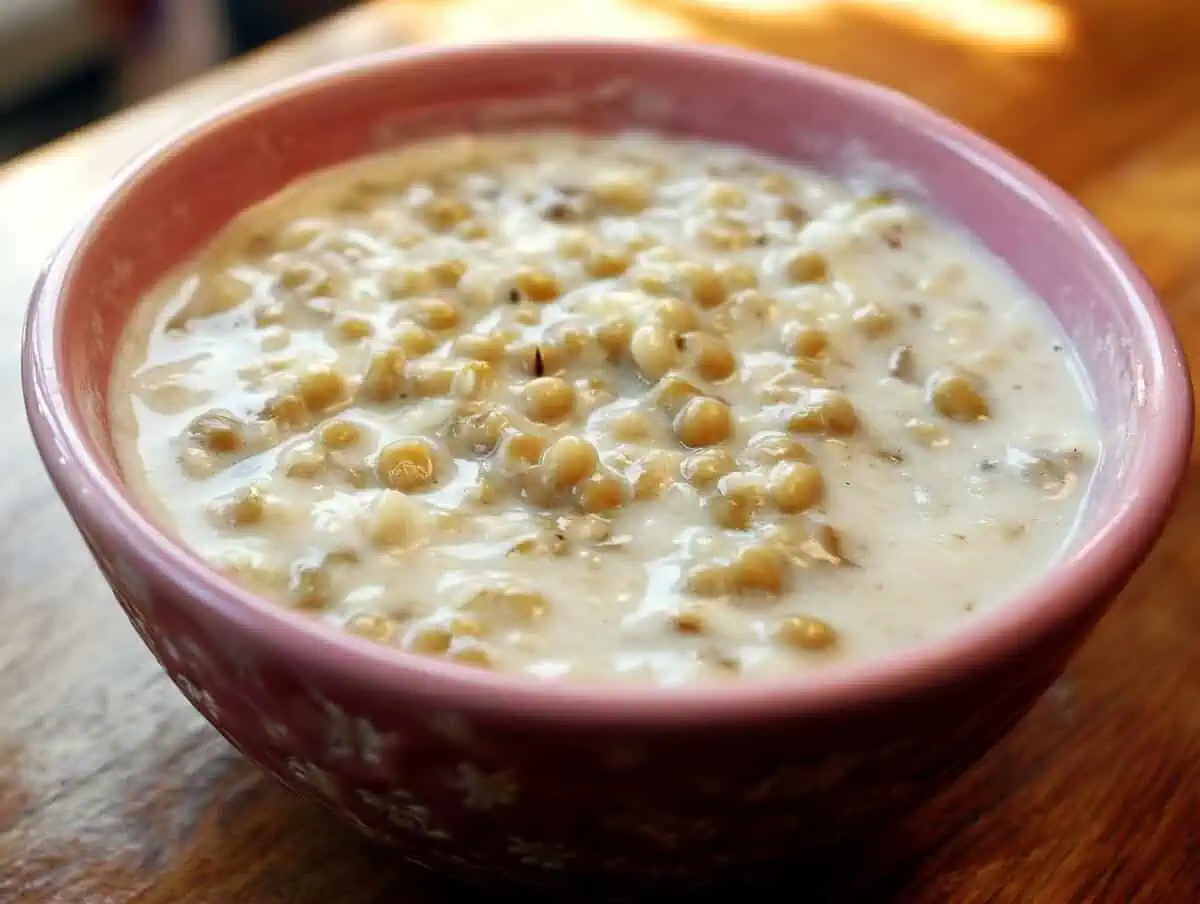
How To Make
- Start by rinsing the mung beans thoroughly under cold water using a fine mesh strainer until the water runs clear. This removes any dirt or debris and helps the beans cook more evenly.
- Combine the cleaned mung beans and water in your medium saucepan. Make sure there's enough water to cover the beans by about an inch, as they'll absorb quite a bit during cooking.
- Bring the mixture to a rolling boil over medium-high heat, then immediately reduce the heat to medium-low. You want a gentle simmer that won't cause the beans to break apart too much.
- Let the beans simmer for 25-30 minutes, stirring occasionally with your wooden spoon. The beans are ready when they're tender enough to mash easily with the back of your spoon but still hold their shape mostly intact.
- Pour in the coconut milk slowly while stirring continuously. This prevents the coconut milk from curdling and ensures a smooth, creamy texture throughout the dessert.
- Add the granulated sugar gradually, starting with 3 tablespoons and tasting as you go. Remember, you can always add more sweetness, but you can't take it away once it's in.
- Continue simmering the mixture for another 5-7 minutes, stirring frequently to prevent sticking. The consistency should be creamy but not too thick, similar to a loose pudding.
- If using condensed milk, stir it in during the last 2 minutes of cooking. This adds extra richness and a deeper sweetness that many Filipino families prefer.
- Remove from heat and let it cool slightly before serving. The dessert will thicken a bit as it cools, which is exactly what you want for the perfect consistency.

Tips from Lola's Kitchen
- Soak the mung beans for 2-3 hours before cooking - This cuts down cooking time by almost half and ensures more even cooking
- Don't rush the simmering process - Low and slow cooking prevents the beans from becoming mushy and maintains better texture
- Taste frequently during the last 10 minutes - This is when you have the most control over sweetness and consistency
- Serve warm or chilled - Both ways are delicious, but I personally love it warm on rainy days
- Make extra - This dessert tastes even better the next day as the flavors meld together
Substitutions
- Coconut milk alternatives - Use evaporated milk mixed with coconut cream for richer flavor
- Sugar options - Brown sugar adds a deeper molasses flavor, or use coconut sugar for a more natural sweetness
- Dairy-free condensed milk - Coconut condensed milk works perfectly for those avoiding dairy
- Water substitute - Use coconut water instead of regular water for extra coconut flavor throughout
Troubleshooting
- Beans won't soften - Old mung beans take longer to cook; extend cooking time by 10-15 minutes
- Too watery - Simmer uncovered for a few extra minutes to reduce liquid
- Too thick - Add warm water or coconut milk, one tablespoon at a time
- Coconut milk separated - Lower the heat and stir constantly; it will come back together
- Not sweet enough - Add condensed milk gradually rather than more sugar for better flavor
Storage & Reheating
- Refrigerator storage - Keep covered for up to 4 days in the fridge
- Freezer storage - Freeze in portions for up to 2 months, though texture may change slightly
- Reheating tips - Add a splash of coconut milk when reheating to restore creaminess
- Serving cold - Actually tastes amazing chilled, almost like a pudding
- Portion control - Divide into individual containers for easy grab-and-go desserts
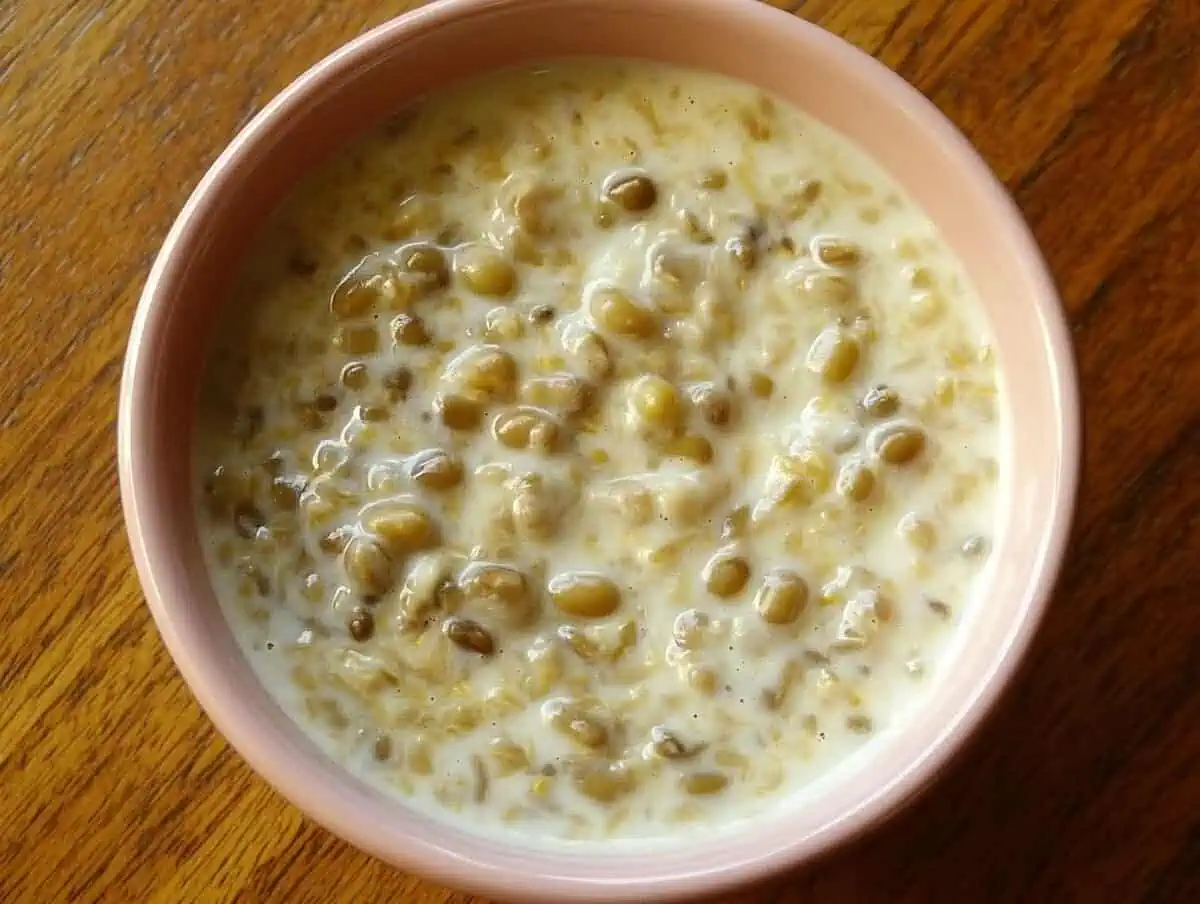
FAQ
Can I use canned coconut milk?
Absolutely! Canned coconut milk actually works better than fresh for consistent results
How do I know when the beans are done?
They should be tender enough to mash with a fork but not completely falling apart
Can I make this vegan?
Yes, just skip the condensed milk or use a plant-based version
Why did my coconut milk curdle?
Usually from too high heat; always keep it at a gentle simmer once coconut milk is added
Can I add other flavors?
Try a pinch of pandan extract or vanilla for different flavor profiles
Is this healthy?
Mung beans are packed with protein and fiber, making this a relatively nutritious dessert option
Related
Looking for other recipes like this? Try these:

Ginataang Minatamis na Munggo (Sweet Mung Bean in Coconut Milk)
Ingredients
- 1 cup mung beans
- 2 cups water
- 1 cup coconut milk
- 3-4 tablespoons granulated sugar adjust to taste
- 2-3 tablespoons sweetened condensed milk optional
Instructions
- Start by rinsing the mung beans thoroughly under cold water using a fine mesh strainer until the water runs clear. This removes any dirt or debris and helps the beans cook more evenly.
- Combine the cleaned mung beans and water in your medium saucepan. Make sure there's enough water to cover the beans by about an inch, as they'll absorb quite a bit during cooking.
- Bring the mixture to a rolling boil over medium-high heat, then immediately reduce the heat to medium-low. You want a gentle simmer that won't cause the beans to break apart too much.
- Let the beans simmer for 25-30 minutes, stirring occasionally with your wooden spoon. The beans are ready when they're tender enough to mash easily with the back of your spoon but still hold their shape mostly intact.
- Pour in the coconut milk slowly while stirring continuously. This prevents the coconut milk from curdling and ensures a smooth, creamy texture throughout the dessert.
- Add the granulated sugar gradually, starting with 3 tablespoons and tasting as you go. Remember, you can always add more sweetness, but you can't take it away once it's in.
- Continue simmering the mixture for another 5-7 minutes, stirring frequently to prevent sticking. The consistency should be creamy but not too thick, similar to a loose pudding.
- If using condensed milk, stir it in during the last 2 minutes of cooking. This adds extra richness and a deeper sweetness that many Filipino families prefer.
- Remove from heat and let it cool slightly before serving. The dessert will thicken a bit as it cools, which is exactly what you want for the perfect consistency.
Tips from Lola's Kitchen
- Soak the mung beans for 2-3 hours before cooking - This cuts down cooking time by almost half and ensures more even cooking
- Don't rush the simmering process - Low and slow cooking prevents the beans from becoming mushy and maintains better texture
- Taste frequently during the last 10 minutes - This is when you have the most control over sweetness and consistency
- Serve warm or chilled - Both ways are delicious, but I personally love it warm on rainy days
- Make extra - This dessert tastes even better the next day as the flavors meld together
The Story Behind Ginataang Minatamis na Munggo
Ginataang Minatamis na Munggo has deep roots in Filipino culinary tradition, dating back centuries when resourceful home cooks discovered how to transform simple mung beans into a beloved dessert. This sweet treat emerged from the practical need to make nutritious, affordable ingredients taste extraordinary, which is at the heart of Filipino cooking philosophy.
The dish belongs to the broader family of "ginataan" recipes, which refers to any food cooked in coconut milk. Coconut milk has been a cornerstone of Filipino cuisine since pre-colonial times, when abundant coconut trees provided both sustenance and flavor to island communities. The combination of mung beans and coconut milk created a dessert that was both filling and satisfying, perfect for large families on limited budgets.
Mung beans, known locally as "munggo" or "monggo," were introduced to the Philippines through trade with China and India. These protein-rich legumes quickly became popular not just for savory dishes but also for sweet preparations. Filipino cooks discovered that when slow-cooked until tender, mung beans develop a naturally creamy texture that pairs beautifully with coconut milk's richness.
What makes this dessert particularly special is its versatility across different regions of the Philippines. In some provinces, families add strips of jackfruit or sweet potato for extra texture and flavor. Others prefer to keep it simple with just the classic combination of beans, coconut milk, and sugar. This adaptability has helped the recipe survive and thrive across generations.
Today, Ginataang Minatamis na Munggo remains a symbol of Filipino comfort food culture. It's the kind of dessert that grandmothers teach their grandchildren, passing down not just the recipe but also the patience and love required to cook the beans to perfect tenderness. Whether served warm on a rainy afternoon or chilled as a refreshing treat, this humble dessert continues to bring families together around the table.









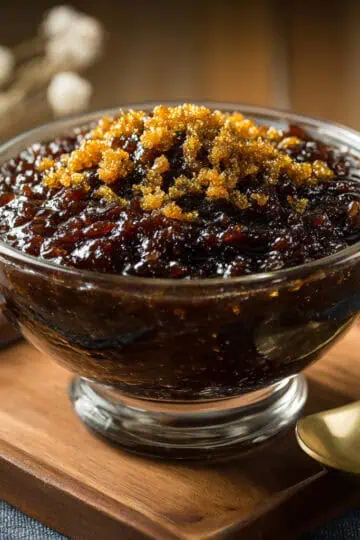
Comments
No Comments